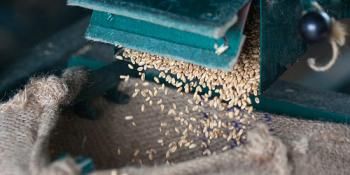Halting deforestation: lessons from Brazil

by Vanessa Meadu
The Brazilian legal Amazon, an area approximately the size of Europe, is a globally vital carbon sink. Its destruction would result in a massive release of greenhouse gases into the atmosphere, which would be permanent and irreversible; cause traumatic losses to biodiversity and local ecosystems; and negatively impact Brazil's environment and economy. But timber is lucrative and so are the commodities that have traditionally replaced forests, including soya and cattle.
Nevertheless, Brazil has taken the threat of Amazon deforestation very seriously, putting into place strongly-enforced policies that cut across all sectors to reduce deforestation. As a result, the annual deforestation rate in the Amazon has significantly decreased since 2003. More amazingly, the country’s GDP increased despite the reduction in deforestation.
How did they do it?
At 15 June side event to the United Nations Rio+20 conference, scientists and policy makers from Brazil’s environment ministries and agricultural agencies joined with researchers from international organisations and NGOs to hone in on how Brazil has reversed deforestation in the Amazon to become a country with one of the most advanced tropical forest legislations in the world.
Francisco Jose Barbosa De Oliveira Filho, from the Department for Policies Against Deforestation (Ministry of the Environment, Brazil) and Jorge Hargrave, of the Institute for Applied Economic Research (IPEA) outlined some of the country’s conservation policies and targeted action plans have contributed to reduced deforestation.
Cracking down on illegal logging
One key to success has been the harsh punishment dealt out to land owners who break Brasil's deforestation rules. Command-and-control actions, such as confiscation of cattle, has enhanced the security of protected areas. Jan Börner, a scientist working with the Center for International Forestry Research (CIFOR), shared new findings showing that enforcement has been a worthwhile investment for the government, and that strict enforcement continues to be effective even in areas that have already seen significant reductions in deforestation.
United against deforestation
In Brazil, deforestation is everyone’s problem, and everyone’s responsibility. It cuts across all sectors including trade, agriculture, biodiversity and ecosystem protection, indigenous rights, migration and more. Francisco De Oliveira Filho from the Ministry of Environment, stressed that cooperation among ministries has been crucial to the success of Brazil’s forest conservation initiatives. By working together, diverse agencies such as the national monitoring system, the remote sensing system and enforcement officials have successfully detected and punished illegal logging, deforestation and sawmills.
But halting deforestation is only one piece of the puzzle. Brazil’s economy is growing, and agricultural exports are skyrocketing. How can Brazil feed itself (and the world) in light of increasing population, volatile commodity prices, and impending climate change?
Wise use of existing land
Paulo Barreto of the Amazon Institute of People and the Environment (IMAZON) shared insights on how to move the country from reducing deforestation to using land more efficiently for food production.
People deforest but are not using land efficiently. He mentioned that there are 11 million hectares of underutilized pasture in Brazil; the same area currently covered by all of the ethanol and sugar plantations in the country.
There are various barriers to agricultural intensification on deforested land. Some land is simply unsuitable for agriculture (due to excessive rainfall or bad topography); high risks for farmers to invest (due to unclear land tenure and unstable environmental rules); and simply a lack of knowledge or capacity to sustainably intensify farming activities. Several speakers emphasized that the declining rate of deforestation will only be sustained if the government supports a change in a way that people use the forest. New policies should focus on changing the economic incentives in favour of sustainable land uses which increase agricultural productivity, enhance income and climate resilience for smallholders while also storing carbon.
Brazil’s example shows what can be achieved through extremely concerted political commitment and effort. Environmental and economic goals need not always be at odds. Brazil’s challenge is to ensure that poor people are not marginalized but rather included at the heart of sustainable agricultural activities.
Related publications
Working paper: REDD sticks and carrots in the Brazilian Amazon. Assessing costs and livelihood implications by Jan Börner, Sven Wunder, Sheila Wertz-Kanounnikoff, Glenn Hyman, Nathália Nascimento
Policy Brief: Linking forests and food production in the REDD+ context by Gabrielle Kissinger
The CGIAR Research Program on Climate Change, Agriculture and Food Security (CCAFS) is covering the Rio+20 Conference live between 12 - 22 June. Read the latest stories related to agriculture and food security from the conference. To get the latest updates follow both CCAFS on Facebook and Twitter and Agriculture Day Facebook and Twitter. Join the conversation about agriculture and food security during at Rio+20 using #Rio4ag on Twitter.
Vanessa Meadu is the communications manager for the CGIAR Research Program on Climate Change, Agriculture and Food Security (CCAFS).

